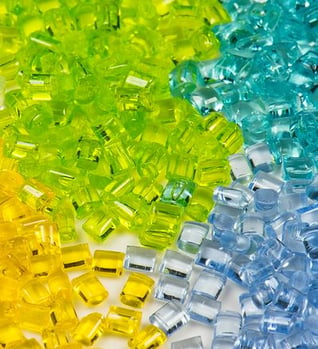Asaclean®’s industry-leading R&D department has spent almost 30 years perfecting solutions for clear resins and parts. But those years of R&D paid off, and we offer numerous options to make clear resins easier to work with. E Grade, EX Grade, & PLUS Grade all excel for clear applications, but work with an Asaclean® Purging Expert to find out the best product for your specific needs. But the products are just part of the equation. There are some easy ways to avoid contamination when using clear resins. These two tips will help you stop contamination issues in their tracks:
1. Practice Preventative Purging
The best offense is a good defense. If you purge preventatively, you will avoid most contamination issues in the first place. Purging regularly will guarantee better quality in less time. If your screw and barrel are clean, you will have fewer issues with clear resins.
2. Aggressively Displace Your Purge
If you’re experiencing contamination issues when changing clear production resins, low-to-medium back pressure and screw speeds are often to blame. Some assertiveness is needed when purging certain resins like Bayer’s Texin, Desmopan (TPU) and Makrolon (PC). To help minimize contamination with clear resins, follow these easy but effective steps.
For Injection Molding:
-
Keep the screw in the full forward position by increasing backpressure to the maximum safe level.
-
Increase the screw speed to the highest safe level once the barrel is full of the production resin.
-
Once the production resin is free of the purging compound residue, drop the backpressure and perform short, high-velocity injection shots.
For Extrusion:
-
Plug any vents on the barrel.
-
Leave a breaker plate in place to create some back-pressure in the barrel.
-
Use the highest screw speed available on the extruder without tripping out the motor.
Ultimately, if you purge between material/color changeovers, seal your machine during shutdowns, and purge with an excellent cleaner like EX Grade at the first indication of contamination, most of your challenges with clear resins will be solved.
But what about residue?







 Purging process temperature and MFI are the most consistent indicators of how to successfully eliminate residue. That’s why it’s critical to use the recommended temperature range for the purging compound and resin.
Purging process temperature and MFI are the most consistent indicators of how to successfully eliminate residue. That’s why it’s critical to use the recommended temperature range for the purging compound and resin.






